
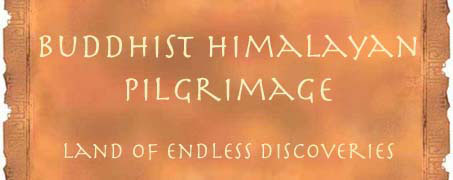


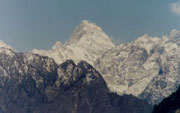
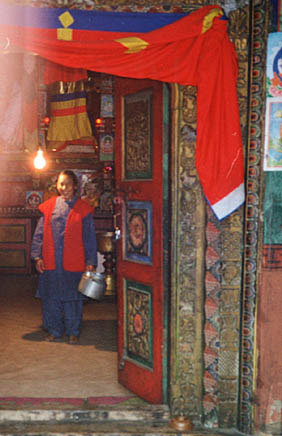 On our amazing Buddhist Himalayan Pilgrimage
we will visit ancient Tibetan Buddhist monasteries in the rooftop
of the world--the mystical, enchanting Himalayan mountains. As we
trek through the Himalayas on our summer adventure, we will enjoy
crisp mountain air, hear the echos of spinning Tibetan prayer
wheels and the chanting of monks, sink into carpets of emerald
green meadows, smell the wondrous fragrance of wildflowers, and
experience the beauty of pristine glacial lakes. In the most
heavenly setting on earth, we will discover an amazing view of the
Tibetan culture that was imported to India when the Chinese invaded
Tibet in the mid-twentieth century. The Tibetans are a soulful and
spiritual people whose lives have been steeped in mysticism since
time immemorial.
On our amazing Buddhist Himalayan Pilgrimage
we will visit ancient Tibetan Buddhist monasteries in the rooftop
of the world--the mystical, enchanting Himalayan mountains. As we
trek through the Himalayas on our summer adventure, we will enjoy
crisp mountain air, hear the echos of spinning Tibetan prayer
wheels and the chanting of monks, sink into carpets of emerald
green meadows, smell the wondrous fragrance of wildflowers, and
experience the beauty of pristine glacial lakes. In the most
heavenly setting on earth, we will discover an amazing view of the
Tibetan culture that was imported to India when the Chinese invaded
Tibet in the mid-twentieth century. The Tibetans are a soulful and
spiritual people whose lives have been steeped in mysticism since
time immemorial.
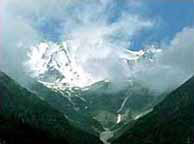 In the high Himalayan mountains, we will explore an
adventure of spiritual awakening and unbounded awareness. On our
visit to the mysteries of our Lost Horizon of Shangri-La, we will
discover what heaven is and dream of timeless
eternity.
In the high Himalayan mountains, we will explore an
adventure of spiritual awakening and unbounded awareness. On our
visit to the mysteries of our Lost Horizon of Shangri-La, we will
discover what heaven is and dream of timeless
eternity.
This experience will transform us. We will never be the same.
 Susan Shumsky of Divine Travels is a member of Travel Service Network, Inc. (TSN). Professional industry affiliations include:  
   
|
|
||
|
Hotel: The Oberoi Maidens or Similar (Meals: Breakfast & Welcome Dinner at Chor Bizarre) 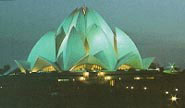 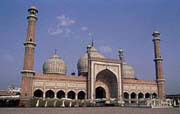

New Delhi: The new capital designed by Sir Edward Lutyens. An interesting drive in the one passing through the impressive Rajpath from the World War I memorial arch, the India Gate towards the Presidential Palace. Visit Humayun's Tomb built in 1565 AD, Safdarjung's Tomb, the Qutab Minar, 72 meters high and the most curious antique, the uncorroded Iron Pillar, which dates back to the 4th century AD.After breakfast, enjoy a walking tour of Old Delhi, featuring the Raj Ghat, where Gandhi was cremated. Next a Cycle Rickshaw carries you through the crowded Chandni Chowk bazaar to Jama Masjid, India's largest mosque. In the afternoon, we drive through New Delhi to visit the India Gate and the old residence of the British Viceroys. |
|||
|
After breakfast, leave for Nalagarh by surface. Reach Nalagarh in the evening and transfer to hotel. Dinner & overnight at hotel. 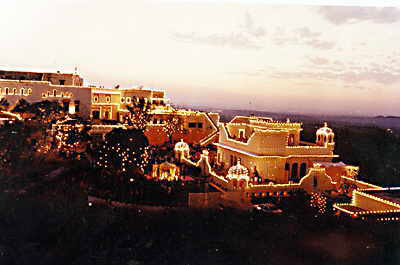 Nalagarh Fort: Nalagarh is the capital of the Kingdom of Hindur founded by Raja Ajai Chand in 1100 A.D. It was ruled by the Chandela Rajputs who originate from Chanderi in the Bundelkhand region of Central India. The famous Khajuraho Temples were built by the Chandela Kings of yore. The fort was built during the reign of Raja Bikram Chand in 1421. The present Raja of Nalagarh & his relatives extend a Royal Welcome. |
|||
LINKS TO DIVINE TRAVELS TOURS, RETREATS AND CONFERENCES DIVINE TRAVELS HOME SPIRITUAL CRUISES SPIRITUAL RETREATS SACRED INDIA TOURS SACRED EGYPT TOURS SACRED PERU TOURS SACRED BALI TOURS SACRED GREECE TOURS SACRED MEXICO TOURS JOIN OUR MAILING LIST DIVINE REVELATION HOME DIVINE TRAVELS HOME |
|
||
|
Hotel: Holiday Inn Or Similar (Meals Breakfast, Lunch & Dinner)
Hadimba Temple : Hadimba or Dhungiri temple in Manali is one of the most important temples in the region. This four story wooden temple is located in the middle of a forest called the Dhungiri Van Vihar. From the name of the forest parkland this temple derives its name. This temple was erected in 1553 and is dedicated to Goddess Hadimba. Gadhan Thekchoking Gompa:
|
|||
LINKS TO DIVINE TRAVELS TOURS, RETREATS AND CONFERENCES DIVINE TRAVELS HOME SPIRITUAL CRUISES SPIRITUAL RETREATS SACRED INDIA TOURS SACRED EGYPT TOURS SACRED PERU TOURS SACRED BALI TOURS SACRED GREECE TOURS SACRED MEXICO TOURS JOIN OUR MAILING LIST DIVINE REVELATION HOME DIVINE TRAVELS HOME |
After breakfast, leave for Keylong (115 Km/3350 meters). Reach Keylong in the evening & transfer to tented accommodation. Dinner & overnight at Camp. 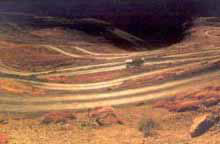

|
||
|
After breakfast, trek towards Guru Ghantal Monastery (03 Km) and transfer to tented accommodation. Dinner & overnight at camp. Overnight: Camp (Meals Breakfast, Lunch & Dinner)
Guru Ghantal Monastery: Located on the confluence of the Chandra and the Bhaga rivers, may be the oldest centre of Buddhist pilgrimage. Downstream, on the left bank of the Chandrabhaga is Tunde village, site of another ancient Buddhist shrine.
Found about 800 years ago but repaired extensively about 30 years ago, the gompa is linked to the one at Stakna, near Leh in Ladakh, and belongs to the Drukpa order. Guru Ghantal is made from wood and This shrine is popularly known as Trilokinath and enshrines an image of 'Boddhisatva Avalokiteshwara'. The archaeological evidence found at this site indicates that it had been a significant Buddhist as well as Hindu pilgrimage site in the distant past. Further below at the confluence of the Chandrabagha River and the Miyar stream, is an ancient temple of "Marichi Vajravarahi" at Udaipur, the earliest surviving relic of Indian Buddhism in the valley. It now enshrines a brass image of 'Mahishasurmardani'. The Buddhists continue to regard this site as a temple of "Marichi Vajravarahi". |
|||
|
After breakfast, leave for Chota Dhara (74 Km) en route visiting Khardong Monastery. Reach Chota Dhara and transfer to tented accommodation. Dinner & overnight at camp. 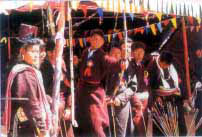 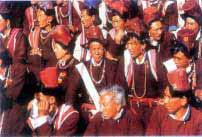
|
|||
|
Kunzum Pass (4551 m): 76 kms from Kaza, Kunzum provides chief access to Lahaul valley by the great Kunzum range. The lofty Shigri Glacier is seen in front in all its grandeur. The crest of the pass has been marked by a chorten of stones erected ages ago. The Panorama as viewed from the top of the Pass is enthralling and inspiring. There is a temple dedicated to Kali, known as Kunzum Devi. Rahul was the son of Buddha and the name Lahaul is drived from Rahul. Chandertal: This is a beautiful glacial lake located at the source of the Chandra River in the Lahaul Valley of Himachal Pradesh. The towering main Himalaya hems the northern periphery of the Chandratal Lake. This lake is fed by melt-waters from the Chandra glacier. The lake is situated at an altitude of 15,500 ft above sea level.  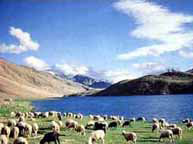
The Chandra Tal Lake lies in a large depression formed by the glacier. The Chandra Tal -- "the lake of the moon" -- is an apt name as it lies in a broad turquoise crescent along the flank of the Great Himalayan range. The high peaks of the Chandrabhaga and Mulkila massifs surround it.
According to some believers, this is the spot from where the god Indra's Chariot took the eldest 'Pandava' brother, 'Yudhistra' to 'Swarga', heaven in his mortal form. Alpine vegetation grows on the surrounding moraines in summer. This lake freezes during the winter season. Its waters are crystal clear. A number of temples stand along the periphery of the lake. To the north lies a plain of fairly good grass. This little "oasis", sheltered from the bitter winds, is a favorite halting place for shepherds, who bring up large herds from Kangra and Kullu. |
|||
|
After breakfast, leave for Kaza (12 Km Trek & 76 Km drive/3600 Meters). Reach Kaza and transfer to hotel/tented accommodation. Dinner & overnight at Rest House.
Scattered over this ethereal landscape are Buddhist monasteries whose antiquity seems lost in the shadows of long centuries. Along with the fascination that the terrain holds, these monasteries are its main attraction - and Lahaul has eighteen of them.
While the route from Manali to Leh through Lahaul has been declared an 'International Tourist Circuit' and along one of the highest highways in the world is fairly traversed, other parts remain - to put it mildly - off beat. Little villages with their patchwork of green fields, located near gushing streams, provide colour and relief to this rather forbidding landscape.
In practical isolation for centuries, Spiti has an intensely introvertive culture centred around its several monasteries, there are thirty monastries spread over Spiti's rugged terrain. Most are affiliated to the Geluk-pa sect. Spiti was loosely ruled for many centuries by a hereditary wazir, styled Nono. The majority of the people are Buddhists, followers of the Geluk-pa sect. The repetition of the mantra "Om mani padme hum", literally, 'Behold, the jewel is in the lotus', is constant; it is believed to bring good fortune and wash away all sins. For all the seeming bleakness, Spiti possesses a haunting beauty. The wildlife in the region includes the elusive snow leopard and ibex, found in the Pin Valley. The seven gompas in the Pin valley belong to the Nying-pa order, while those at Kaza and Hikim are of the Sakya-pa sect. In Spiti's introvertive culture, for centuries, life has revolved around these monasteries. 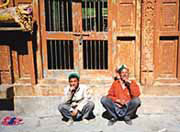 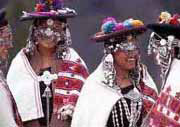 |
|||
|
After breakfast, visit Ki Monastery (07 Km/4116 meters) & Kibber Village(11 Km/4205 meters). Dinner & overnight at Rest House.
Ki (Kye) Monastery: Serves the western part of Spiti and the most prominent feature of the valley. It lies about 07-km of Kaza and holds the honor of being the oldest and biggest monastery of Spiti. It is a well-known religious training centre for the Lamas, whom one will find dancing, singing and playing on their pipes and horns. One will also find murals, books, scriptures and paintings of Buddha and other Goddesses.
The successive trails of destruction and patch-up jobs have resulted in a haphazard growth of box-like structures, and the complex now resembles a defensive fort. Among the other important monasteries in the Spiti valley are an ancient temple at Lha-Lun, and another temple complex at Dhankar. The temples at Dhankar seem to be precariously dangling between heaven and earth. 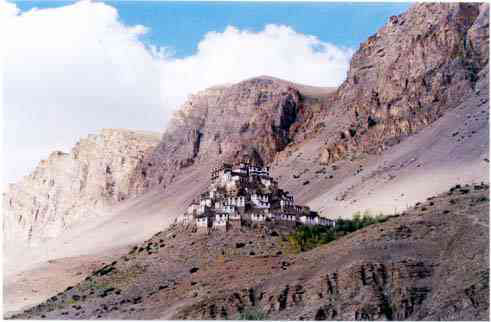
In Kibber, all houses have been built by stone, instead of mud or unburned brick so commonly used in the houses of the Spiti valley. Even at this height, the village has plenty of cultivable land and Barley and peas are cultivated once in a year. There is also a Buddhist Gompa known as Yaktin Gompa located over here. |
|||
|
After breakfast, leave for Tabo (47 Km/3050 meters). En route visit Dhankar Monastery. Reach Tabo and transfer to Rest House. Afterwards, visit Tabo Monastery & Tabo Village. Dinner & overnight at Rest House.
Dhankar Monastery: One can get to the Spiti valley across Kunzamla, if one follows the up-stream course of the Chandra river. Located in the trans-Himalayan arid and arctic zone, this region is characterised by a stark and barren landscape. One of the oldest Buddhist establishments in the Spiti valley, is the Monastery at Gungri located deep in the Pin valley. It is the only monastery which belongs to the red-headed sect - the Nyingmapa - founded by Padmasambhava. Tabo (3050 m) - 32005'N, 78023'E: At the right of Spiti river, is an ancient village on this route (33 km from Sumdo) flanked on either side by lofty hills, brown and sun burnt. It is the seat of one of the most famous Buddhist monasteries - Sherlangh, Duang, Chamba Chobbo, Domlang Gompas, regarded by many as only next to the Tholong Gompa in Tibet. The 10th Century Tabo Monastery, built around the 996 A.D. by Rinchen Jangpo, houses more than 60 Lamas, large number of scriptures and pieces of art, wall paintings, tankhas and stucco. 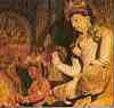 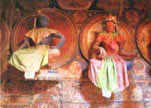 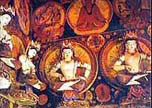 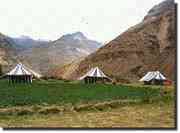 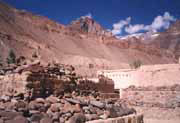
Tabo Monastery: The rough-hewn hills around Tabo house a tiny hamlet that is home to some 350 people. The Tabo monastery (also referred to as Tabo Chos-hKhor - 'doctrinal circle' or 'doctrinal enclave') is a complex that holds nine temples, 23 chortens, a monks' chamber and an extension that houses the nuns' chamber. On the sheer cliff-face above the enclave are a series of caves which were used as dwellings by the monks and includes an 'assembly hall'. Faint traces of the paintings that once embellished the rock face can be seen. Even today, Tabo holds the distinction of being the largest monastic complex in Spiti. Constructed in 996 AD, Tabo was the brainchild of the great translator and teacher, Rinchensang Po. 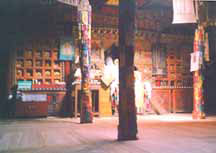 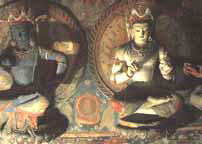 |
||
|
After breakfast, leave for Kalpa (approx 150 Km/2960 meters). En route visit Chango Monastery. Reach Kalpa in the evening and transfer to tented accommodation/Rest House. Dinner & overnight at camp. 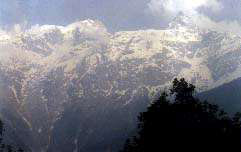 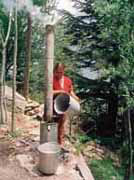 Kalpa (2960 m) - 31 032'N, 78015'E: Kalpa, the district headquarters is situated at a distance of 260 km from Shimla and 51 km from Sangla. Kalpa was once the favourite haunt of Lord Dalhousie, the then Governor General of India. Kalpa is surrounded by vineyards. It offers a rare chance to buy Kinnauri shawls and caps from Handicrafts Emporium. |
|||
|
After breakfast, visit Kalpa Village & Recong Peo Monastery. Afterwards, leave for Sangla (51 Km/2680 meters). Reach Sangla in the evening and transfer to tented accommodation. Dinner & overnight at camp.
|
|||
|
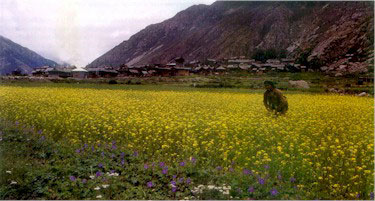
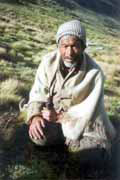
After breakfast, full day at Sangla. Visit Kamru Fort & Chitkul Village (3450 meters). Dinner & overnight at camp. 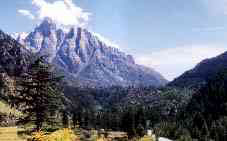
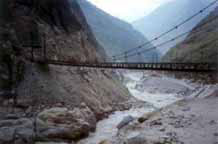
Sangla (2680 m): The Central village in the valley, scenic Sangla is 18 km from Karchham. A link road that goes off the N.H. No.22 into the Baspa valley offers an enchanting visit at every curve. There are saffron fields, orchards and vineyards. The Kinner Kailash peak dominates the view from Sangla. It is worth a visit to the Kamru Fort, an impressive fortress-style temple dedicated to the Goddess Kali, where all the Maharajas of Kinnaur were crowned. 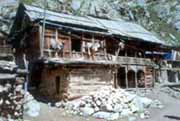 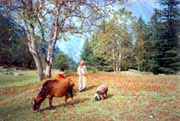 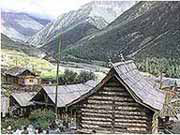 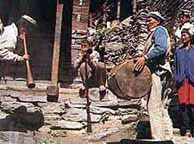
Chitkul (3450 m): Chitkul, the last and the highest village in this valley, 28 km from Sangla, is noted for its alpine meadows and snow scapes. 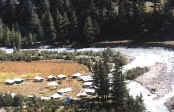
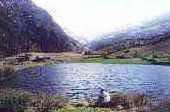
|
|||
|
After breakfast, leave for Sarahan (57 km/2165 meters). Reach Sarahan and transfer to Rest House. Afterwards, visit to Bhimakali Temple, Lanka Vir Temple and view of Shrikhand Manadev Peak. Dinner & overnight at Rest House. 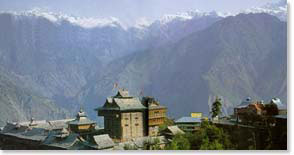
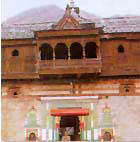
Lanka Vir Temple: Situated next door to the Bhimakali temple, this was where human sacrifices were made long ago to please Goddess Bhimakali. The bodies were apparently thrown into the well nearby. Shrikhand Manadev Peak: Once in Sarahan, one beholds a range of the snow-capped Himalayan peaks and one of them is the Shrikhand Peak. The rather peculiar thing about this peak is that it is only one whose tip remains uncovered with snow. In the evening, sunrays adorn the peaks and the sight is simply stupendous. |
||
|
After breakfast, leave for Shimla (175 Km/2205 meters). Reach Shimla in the evening & transfer to hotel. Dinner & overnight at hotel. 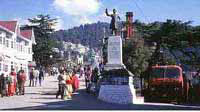
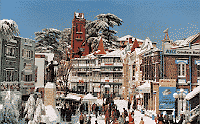
|
|||
|
After breakfast, full day sightseeing of Shimla. Dinner & overnight at hotel.
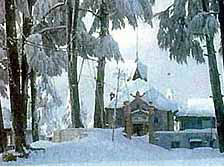 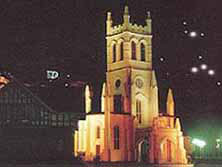 Shimla, situated in the north-west Himalayas, Shimla, the summer capital of India during the pre-independence era, is now the capital of Himachal Pradesh. Shimla town is spread over the ridge measuring about 12 km. On the off shoots of the central crescent shaped ridge, are located its suburbs. Shimla is perhaps the biggest hill station or hill town of the world at its height 2206 metres. At one time its base ridge had the thickest forests of the area, now its green slopes, covered with firs, pines, rhododendron, the Himalayan oak and the foliage are dotted with houses and buildings. |
|||
|
|
|||
|
Early morning, transfer to IGI Airport and tour terminates. |
|||
| END OF TOUR |

| CLICK HERE FOR INDIA TOUR FEES !!! |
| CLICK HERE TO INQUIRE OR REGISTER NOW ON OUR SECURE SERVER !!! |
| INDIA TRAVEL AND VISA INFORMATION |
|
TOUR INCLUDES: |
|
TOUR DOES NOT INCLUDE: |
| CLICK HERE FOR INDIA TOUR FEES !!! |
| CLICK HERE TO INQUIRE OR REGISTER NOW ON OUR SECURE SERVER !!! |
| INDIA TRAVEL AND VISA INFORMATION |
CONTACT US: Divine Travels
818 SW 3rd Ave. #1505
Portland, OR 97204
|
CLICK ON LINKS TO OUR TOURS: |
DIVINE TRAVELS HOME
SPIRITUAL CRUISES
SPIRITUAL RETREATS
SACRED INDIA TOURS
SACRED EGYPT TOURS
SACRED PERU TOURS
SACRED BALI TOURS
SACRED GREECE TOURS
SACRED MEXICO TOURS
JOIN OUR MAILING LIST
DIVINE REVELATION HOME
DIVINE TRAVELS HOMECLICK HERE FOR INDIA TOUR FEES
CLICK HERE NOW to Inquire or Register for an India Tour
|
IMPORTANT NOTE: |
Our Tours are not affiliated with any particular spiritual path. All are welcome!
SITE MAP DIVINE TRAVELS: HOME PAGE for Divine Travels | SPIRITUAL RETREATS IN USA | SACRED INDIA TOURS | SACRED EGYPT TOURS | SACRED PERU TOURS | SACRED BALI TOURS | SACRED GREECE TOURS | SACRED MEXICO TOURS | SPIRITUAL CRUISES | Join Our Travel Mailing List | ![]() |
|
CLICK HERE NOW to Inquire or Register for an India Tour